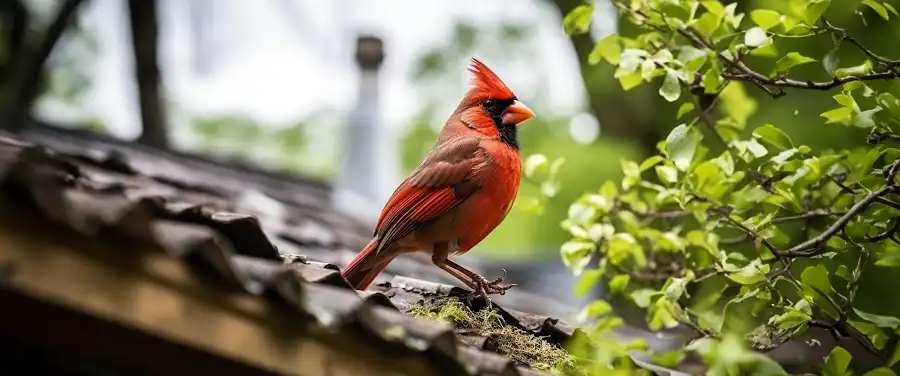
Ever wandered home to find your beautiful Central Florida residence turned into an unplanned feathered fest? If so, then you’re no stranger to the term “nuisance birds.” These are bird species that, interestingly enough, do more than just whistle sweet songs in our ears. As lovely as they may be to watch, they can pose some significant challenges to homeowners in Central Florida.
On a high-level, the wildlife in Central Florida teems with a variety of bird species. From the extravagant peacocks to the homely pigeons, all create a tapestry of noises, colors, and activities that enliven the surroundings. But when the songbirds become a little too comfortable in our backyards, their presence can tilt from charming to problematic.
Nuisance birds can cause a variety of issues ranging from property damage to health risks. And believe it or not, Central Florida has its share of these feathered ‘mischief-makers.’ Why has your serene home become a chosen hotspot for these birds? And more importantly, how can you reclaim your space? We’re about to delve into these questions, unpacking the problems caused by nuisance birds in Central Florida. Once you have a deeper understanding of the issue at hand, you’ll be in a better position to tackle this ‘flappable’ situation. Of course, preventing nuisance birds isn’t just about keeping your peace of mind—it’s part of the larger picture of responsibly cohabiting with the rich and varied bird species in Florida. So grab your binoculars, fellow bird watchers—it’s time to transform from passive observers to informed problem solvers for both our homes and the health of our feathered neighbors.
What Types of Damage can Nuisance Birds Cause?
Nuisance birds in Central Florida, including grackles, starlings, and pigeons, are a matter of great concern for homeowners and business owners alike. These bothersome avians can cause a wide range of problems, not least of which is physical damage to properties. The damage manifests in various forms such as roof destruction due to nesting habits, defacing signs and storefronts with droppings, and even weakening the structural integrity of buildings. Therefore, recognizing the physical harm caused by these birds is significant.
Another unnerving issue is the spread of diseases. Birds are carriers of disease-causing pathogens, which can potentially pose severe health risks. Bird droppings, in particular, are notorious for harboring dangerous fungi and bacteria, including E. coli and Salmonella.
How does this Damage Affect Human Health and Livelihoods?
The implications of the damage caused by nuisance birds on human health and livelihoods are multi-pronged. Directly and indirectly, these birds affect humans and influence their day-to-day life.
One of the most critical issues arises from the spread of diseases from bird droppings. Coming into contact with these droppings or inadvertently inhaling airborne particles can lead to transmission of serious, even life-threatening illnesses – from Psittacosis and Histoplasmosis to Salmonellosis.
The second impact is on businesses. Imagine shopping in a store or eating at a restaurant besieged by nuisance birds. Birds nesting in business properties and their continuous noise can cause significant business disruptions. It can drive away customers, harm the brand image, and ultimately, lead to financial losses.
How can we Measure the Financial Impact of Damage caused by Nuisance Birds?
Determining the financial fallout of damage caused by nuisance birds requires taking into account several factors. Property owners often bear the brunt of the expenses when it comes to costs of property repairs and cleaning. The repeated pressure of birds nesting on roofs or ledges can weaken these structures over time, leading to significant repair costs.
Health implications amplify the financial impact. Bird droppings-related diseases can lead to high medical expenses and productivity losses due to sickness absences. A study conducted by CDC estimated that the annual cost of illnesses caused by foodborne pathogens is $15.5 billion, and birds are often vectors for these pathogens.
As we ascertain the issues caused by nuisance birds, it becomes evident that measures must be undertaken to manage them responsibly and protect our properties. Keep reading to learn How can Property Owners Protect their Property from the Damage Caused by Nuisance Birds?
How Can Property Owners Protect their Property from the Damage Caused by Nuisance Birds?

Homeowners in Central Florida often struggle with problems caused by nuisance birds, such as property damage, noise, and potential health risks. To protect your property, it’s essential to consider effective bird deterrent solutions.
Bird deterrent solutions aim to prevent and reduce damage caused by these birds in non-harmful ways. The popular methods include the use of bird netting and bird spikes. Bird netting physically blocks birds just like a barrier ensuring the garden, patio, or any other space is bird-free. Bird spikes are not meant to harm birds, but to serve as uncomfortable resting or nesting areas.
An equally effective deterrent comes in the form of noise devices designed to scare birds away, and prevent them from nesting or gathering in particular areas. These noise distribute sounds that are disturbing or frightening to birds, discouraging them from returning.
What Preventative Measures Can Be Taken to Avoid a Nuisance Bird Problem?
For homeowners in Central Florida facing the threat of bird damage, taking preventative measures is another vital step to achieve a bird-free environment. Regular property maintenance can minimize the conditions appealing to nuisance birds.
Cleaning up food waste is also crucial to controlling nuisance bird problems. Birds are usually attracted to sites with readily available food. Neglecting food waste management can attract a large number of birds, leading to an increase in bird nuisance on your property.
Are There Bird-Proof Building Designs?
Often, architects work with wildlife experts to develop bird-proof designs for commercial and residential buildings. These designs incorporate bird nesting prevention strategies such as the use of bird-resistant building materials, roof angles, and positioning of fixtures to discourage nesting.
| Methods | Description |
|---|---|
| Use of Bird-Resistant Materials | Certain materials, particularly those with slick surfaces, discourage birds from nesting or landing on them |
| Roof Designs | Adjusting the angle of the roof can discourage birds from nesting, as they prefer flat surfaces |
| Position Fixtures | Positioning fixtures and decorations strategically to prevent birds from nesting |
As you prepare to deal with problems caused by nuisance birds in Central Florida, consider the options above to minimize bird damage effectively. Stay ahead, and implement practical deterrent solutions, regular property maintenance, and other preventive measures.
Now that you understand these techniques, let’s discuss the legal restrictions associated with managing nuisance birds in Central Florida.
Birds can be beautiful creatures to watch in their natural habitats, but when they become a nuisance to your property in Central Florida, they can cause significant problems. Nuisance birds are known to ravage crops, damage property, and even pose a health hazard to people and pets. In this article, we’ll delve into the issues caused by these unwanted avian visitors and offer some expert tips on how to handle them effectively.
Large populations of nuisance birds in Central Florida are causing havoc in residential areas, commercial properties, and agricultural lands. One of these problems is the degradation of property due to bird droppings. They not only give an unsightly look to your building but also carry diseases that can be harmful to both humans and other animals.
Crops and gardens also suffer extensively as nuisance birds feed on fruits, vegetables, and plants, causing considerable losses for farmers and gardeners. They are also known to damage structures and rooftiles looking for nesting locations, leading to expensive repair costs.
Birds like starlings, pigeons, and grackles can create noise disturbances with their loud and incessant calls. This can be particularly disruptive in densely populated residential areas or in previously quiet rural environments.
To prevent these problems, it’s important to take some proactive measures. One effective method is discouraging nuisance birds from nesting and feeding in the area by removing their food sources and using deterrents like bird spikes or netting. Working with a professional bird control service can offer the most effective and sustainable solutions.
| Bird Species | Average Repair Cost |
|---|---|
| Pigeons | Property damage, noise, disease |
| Starlings | Crop damage, noise |
| Grackles | Noise, property damage |
Conclusion
In conclusion, nuisance birds in Central Florida can cause a range of problems from property damage to noise disturbance and health threats. However, with a proactive approach and professional guidance, these issues can be effectively managed, helping to preserve your property’s value and your peace of mind. The benefits of controlling bird populations extend beyond immediate property protection to broader community health and well-being.
Remember, these birds aren’t just nuisances but an integral part of our natural ecosystem. Hence, all measures taken should consider their safety and the environmental impact. As responsible residents, let’s strive to strike a balance between protecting our interests and respecting nature.
So, don’t let nuisance birds bother you anymore. Start adopting these easy-to-follow guidelines and reclaim the tranquility of your Central Florida property – because you deserve a home that’s both peaceful and safe.
It’s time to make wise decisions and take control of the situation, before the birds take control of you.




